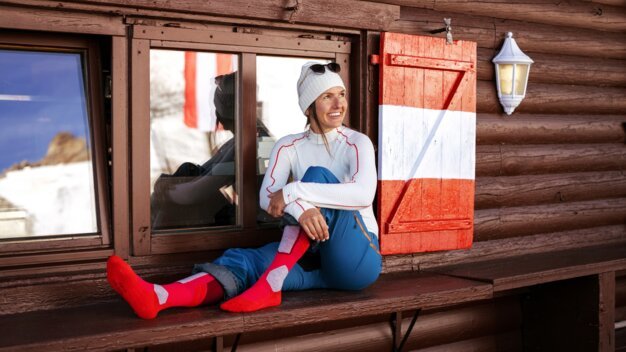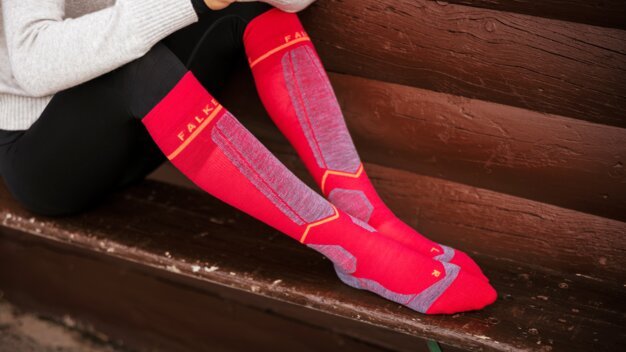
Ski socks should keep you warm and dry – that’s about it, right? Wrong! When you take compression ski socks into the equation, your socks can do much more than keep your toes toasty on the slopes.
Curious to find out what that is? Together with the ski socks experts of FALKE, we have compiled some interesting facts about compression ski socks – let’s check them out!
What are compression ski socks?
Let’s start with a little biology lesson: With every heartbeat, your blood is pumped through your arteries and to your muscles, sending oxygen and nutrients to every cell. After delivering the oxygen, the blood flows back to your heart. During this process, your blood has to move against gravity.
Compression socks help fight the effects of gravity by adding gentle, graduated pressure to your calves and feet. By squeezing your leg tissue and veins, they help the blood flow through your legs and back up to the heart.
What are the benefits of compression ski socks?
You always thought that tight socks restrict blood flow? Think again! Compression socks are prescribed by doctors to prevent blood clots, deep vein thrombosis or poor circulation. You might also have heard that compression socks are recommended for long-haul flights.
Compression socks also have numerous benefits for skiers.
Compression ski socks …
- … offer a tight, wrinkle-free and secure fit.
- … give more stability to your muscles and tendons.
- … provide dampening during impacts.
- … improve blood flow.
- … boost warmth.
- … speed up recovery time.
- … reduce muscle fatigue and, consequently, also the risk of injury.
The downsides: Compression ski socks take a bit of practice to put on. Plus, they are quite pricey. However, considering their many benefits, it’s well worth spending the money on good-quality compression socks like the SK2 Energizing Light or SK4 Energizing Light by FALKE.
Are there differences between compression ski socks and compression socks for other sports?
The functionality is the same for all types of compression socks. However, compression socks for skiing often come with additional features that make them even more convenient for skiing. For instance, FALKE uses soft merino wool in their compression ski socks to ensure ultimate comfort in ski boots. In addition, their socks feature special cushioning zones to protect your foot inside the boot.
What should I keep in mind when buying compression ski socks?
Always make sure to get compression ski socks with good moisture-wicking capabilities! Also think about which level of compression you need. While medical-grade compression stockings usually have a compression rating above 40, compression ski socks have a rating of about 20.
FALKE offers two compression levels. Their lower-level compression socks (16 mmHg) are easier to put on, and you can buy them in your usual shoe size. For high-compression socks (20 to 22 mmHg), you also have to measure your calf circumference to ensure the right fit and compression.
INTERSPORT Rent tip
With good-quality compression ski socks, you can significantly step up your skiing game. What else do you need to excel on the slopes? Top-of-the-line skis or snowboards, high-quality helmets and ski gloves, as well as ski clothing that keeps you warm and dry …
The good news: You can find all of this and more at INTERSPORT Rent. At our more than 800 rental shops across Europe and Canada, we offer a huge selection of ski equipment by leading manufacturers. Simply drop by, test the latest in winter sports technology and get ready to push your limits!






